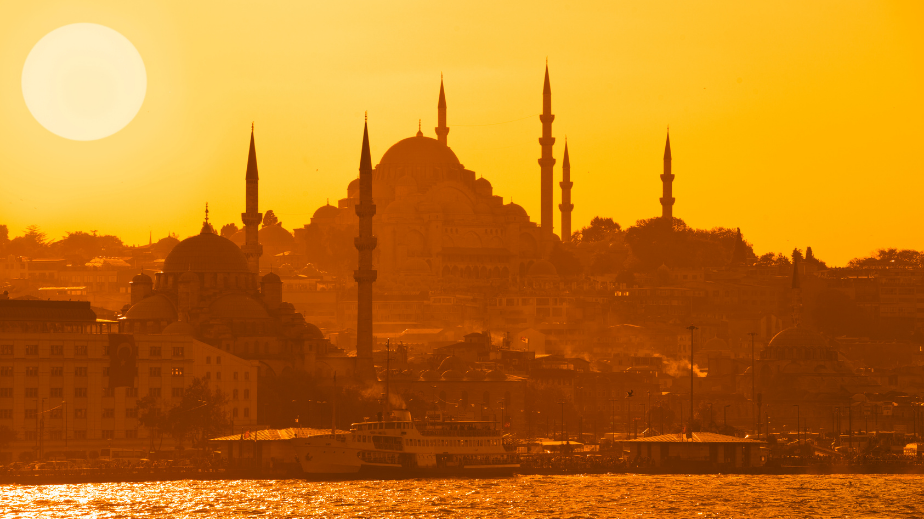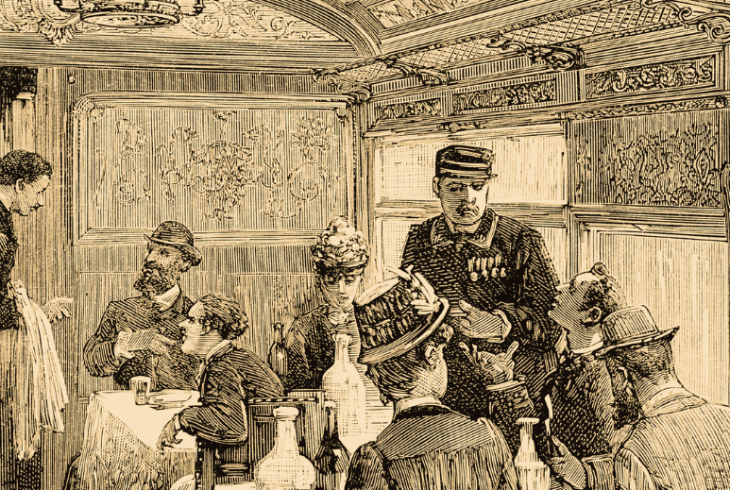A look back to the romance of the golden age of train travel and some of Istanbul’s hidden gems.
The “golden age” of train travel was the period between the end of the 1800’s to the 1940’s. It was a time when unlike today, most travel was reserved for the upper classes and the wealthy. There were very few who could afford the comfort of sleeper trains complete with elegant dining rooms serving lavish menus, all with meticulous service. These upscale travelers, made their way across Europe, many times connecting to other trains bringing them to other even more exotic locations in the middle and far east. This was the setting of the famous Orient Express, the King of trains and the train of Kings.

Not many of us today can boast traveling its many lines, but most of us remember the stories, both true and fictional, that come from the iconic line. Agatha Christie’s novel Murder on the Orient Express, published in 1934, is not only one of the most famous murder mysteries of all times, but also has graced both the big and small screen, most recently with Kenneth Branagh’s version of the film from 2017. The novel was not only set on the Orient Express but inspired by incidents that took place in its history. James Bond fans will also remember Sean Connery in the film From Russia with Love, which has scenes set in Istanbul and on the iconic train. These are only a few of the many books, stories and films with the Orient Express as a backdrop. Let’s take a look at the train’s history and the lure of its last and final stop, Istanbul.

A Little History
The history of the Orient Express, goes back to the Belgian engineer, Georges Nagelmackers and his interest in trains. After a journey to the United States he was so impressed with the new luxury sleeping cars designed by carpenter and entrepreneur George Mortimer Pullman, that he decided to take the concept back to Europe and create a long distance train line where travelers could cross Europe from Paris, eventually arriving in Istanbul, gateway to the east. Soon after the success of its first run in 1883, it quickly became apparent that the Compagnie Internationale Des Wagons LITS, and the Orient Express, would soon change long distance travel forever.
Famous Passengers
There were many, royals and also many famous people who traveled the Orient Express. There was Ferdinand I of Bulgaria who insisted on driving the train through his own country’s borders at a speed so high that he terrified the majority of passengers!. Leopold II of Belgium took the train, but not only on official business. They say he once traveled to Istanbul with the intention of infiltrating a harem! Tsar Nicholas II took the train but first requested his own custom built carriages. Even a President of France, Paul Deschanel, took the train but seems to have fallen out a window. Thank goodness it was during the night when the speed was slow so he wasn’t hurt. He was found the next day wandering about a field in his pyjamas. Agatha Christie took the train she would one day write about, also Marlene Dietrich. Josephine Baker too. On one of Ms. Baker’s many trips a Hungarian terrorist caused a derailment of one of the cars. She was said to have been part of the effort to help tend to the injured. These are just a few of the thousands of stories of colorful passengers (from kings and artists to spies) who made the the journey on the iconic train.

Sirkeci Station
After a journey that lasted five days, travelers finally arrived in Istanbul, at the beautiful Sirkeci Station, constructed specifically for the arrival of the Orient Express. Built in 1888 by German architect August Jasmund, the station is a an architectural gem of both Oriental and Gothic styles which still retains its original stained-glass windows. It is hard to imagine that less than a hundred years ago so many curious travelers, wealthy nobles, diplomats, and business people passed through these then bustling halls. Walking through the station today you can only imagine the flurry of activity when the trains were arriving with whistles blowing! How many languages being spoken, how many porters transporting luggage, and how many people excitedly making their way in and out of the city.

Today you can visit the beautiful station, admire its unique design, its colorful windows and elegant halls and try to imagine it in its hay-day. To help you, there is a small but fascinating museum devoted to the Orient Express and its glory days which is filled with information on the old line, including old documents and correspondence for the Sultan during the planning stages. There are well preserved pieces of original furniture, tableware, switchboards, watchman’s clocks, even a piano. The variety of items arranged in the museum help tell the story of the train’s past and bring it to life, (there’s even a mannequin dressed in uniform!)
For more of the flavor of the past you can also stop and visit the historic Orient Express Restaurant founded in 1890, that is located within the station. It is still serving much of its classic menu from the past. Filled with nostalgia, you can dine in the elegant atmosphere within the station imagining Hercule Poirot stopping for lunch at the table beside you while carefully considering interesting clues in his next case, just before boarding the train!
Pera - Istanbul’s European center of life in the 19th Century
In the heart of the muslim city of Istanbul of the 19th century, was the international neighborhood of Pera. Located beyond Galata and the Golden Horn, Pera, today known as Beyğlu, was center of non muslim life. As the Ottoman city modernized and joined the global economy of the age, Pera was the hub for the growing European population living in the city. After a devastating fire in 1870, the once wooden neighborhood was rebuilt in brick and stone. The streets were lined with beautiful new buildings and shops selling goods from around Europe, cafés, and restaurants serving international cuisine and theaters preforming the latest shows, operas, and concerts. There were embassies and international schools and a population which spoke multiple languages. By the age of the Orient Express, Pera was the best place to stay and most exciting place to be.

After suffering a sharp decline in the late 20th century, Pera, now Beyğlu, was brought back to a new life. Today you can stroll the lively Istiklal Street (once the Grand Rue de Pera), and find it full again with shops, art galleries, book shops, pastry shops, cafés and restaurants. You’ll find both locals and tourists in this bustling part of the city. You’ll also find and interesting mix of architecture as well as great sites to visit. There are mosques, churches and synagogues to visit as well as museums in this multicultural neighborhood.

Pera Palace Hotel
A visit to Pera would not be complete without a visit to the Pera Palace Hotel. This historic gem of a hotel with its beautiful Art-Nouveau facade, was opened in 1895. With no grand style European hotels in the city to host the important guests arriving on the Orient Express, the Pera Palace was the solution. In fact, it was the first building with electricity in the city other than the Ottoman Palaces. It boasted hot running water and an electric lift! This is the hotel that hosted Agatha Christie (some believe it was here, in her favorite room, #411, where she wrote Murder on the Orient Express). Ernest Hemingway, Zsa Zsa Gabor, Alfred Hitchcock, Mata Hari, Jackie Kennedy, and even Queen Elizabeth II are all part of the long, long, list of famous people staying at the hotel. Oh if only the walls could talk! The hotel also has a small museum in Suite 101. This is where Mustafa Kemal Ataturk, the father of modern Turkey resided. It houses a fascinating mix of personal items on display.
Maybe finish your visit to the Pera Palace Hotel with a drink in the Orient Bar and let your imagination bring you back to that golden age of train travel. It was of course here where conversations with fascinating strangers led to new connections crossing international boundaries thus making citizens of a multitude of countries somehow transform to become more plainly citizens of the world…..




